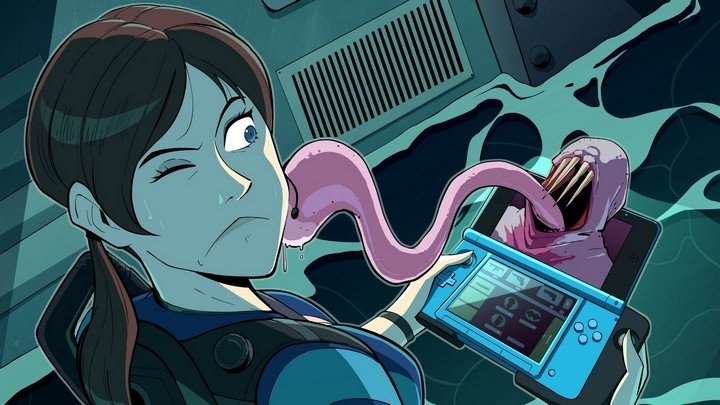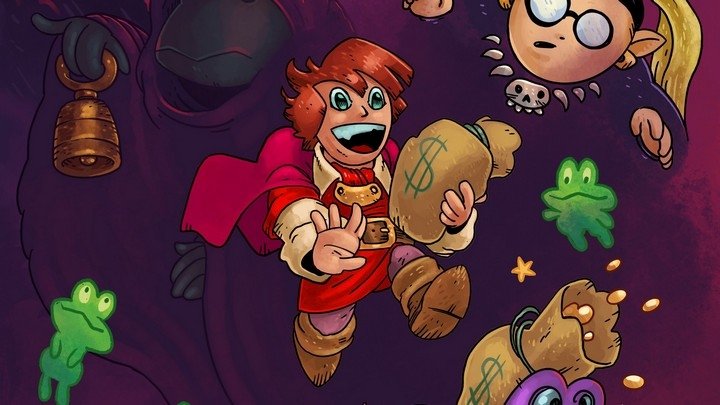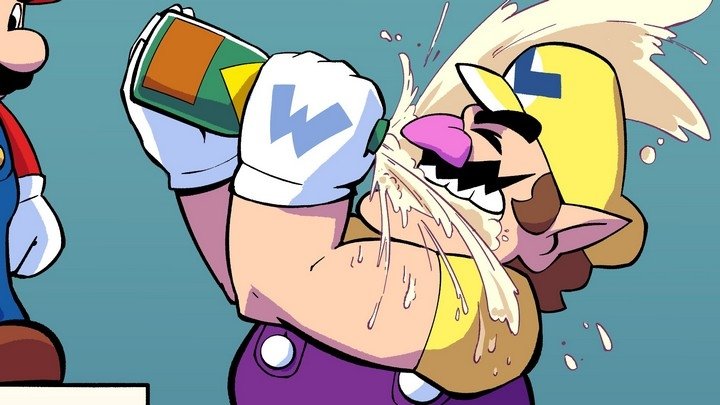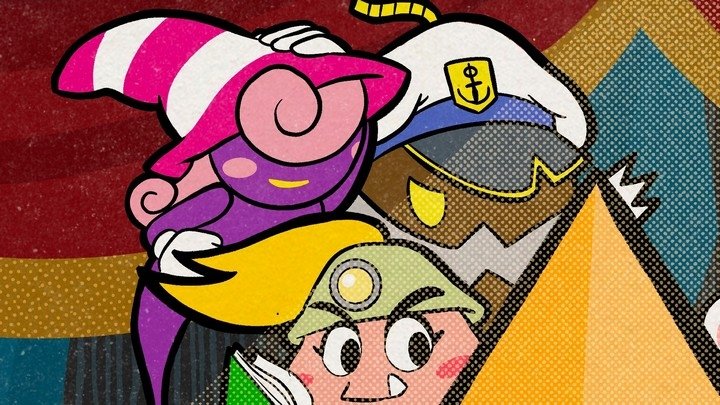What the 2DS means for the future (and past) of Nintendo's portable lineup
If there's one thing I've learned to love about Nintendo over the past decade and a half in which I've covered them professionally, it's the company's ability to take the action everyone least expects. Their unpredictability helps an increasingly conservative industry remain lively — which might seem strange, given that you'd be hard-pressed to name a major video game maker more conservative than Nintendo. It's just that they have their own idiosyncratic definition of "conservatism."
Case in point: The New 2DS XL. On its surface, this newly revealed addition to the 3DS family might seem utterly daft. Nintendo launched a brand-new console/handheld hybrid, the Switch, a mere two months ago. The Switch is selling like gangbusters in much the same way that the Wii U — and, for that matter, the original 3DS before its early emergency price drop — did not. And right around the time the New 2DS XL announcement hit the wires, the company admitted that it has discontinued production of its insanely popular and eagerly sought Classic NES Edition mini-console.
The New 2DS XL seems counterintuitive in light of all these other factors. Why not beef up production of the mini-console and focus on software development for the hot new system? But no: Instead, they've asked us all to turn our attention to the sixth hardware iteration of a six-year-old platform. And after giving it some thought, and going hands-on with the new hardware revision and its two launch titles (Hey! Pikmin and Miitopia), I'm willing to concede that maybe it's a pretty smart plan, despite everything.
No, I'll never really understand why they underproduced the NES Classic and killed it in its infancy. And I definitely find the company's support for two incompatible portable systems to be more frustrating than not. But the 2DS XL carries forward a well-established Nintendo business trend — long-term support for successful systems — while clearly staking out the 3DS platform family as the definitive kiddie alternative to the grown-up Switch. This is the case here moreso than with any other platform in the company's history.
The idea of portable systems as being for younger players has, of course, been built into the format from the start. They called it Game Boy, after all. Yet even from the start, Nintendo marketed the Game Boy to older consumers as well:
So despite brand names and derisive reputations, handhelds haven't been exclusively for kids. Portables have always existed as a sort of split market, like most game systems, with appeal for players of all age... at least until the end of a system's life, at which point the deprecated systems become the hand-me-down to the kid sister or young nephew while the older player moves along to chase the next-generation thing. The hand-me-down practice has always been built into the format, but for the first time, the New 2DS XL truly makes it a business model. This new, stripped-down 3DS iteration is the exact opposite of how Nintendo has sent its previous handhelds into the sunset, if you want to be honest. The Game Boy family went into retirement not with a kiddie device, but rather with the sleek, delicate, adult-oriented Game Boy Micro. Meanwhile, the impossibly successful DS line wound down with the DSi XL, an adult-sized system whose biggest feature was the integration of the online eShop... a digital market place that required the use of (a grown-up's) credit card.
By comparison, the New 2DS XL is absolutely geared toward kids — late elementary and middle school, with the inexpensive original 2DS remaining in the lineup as the choice for younger players. Per its name, the new model drops the platform's original 3D screen while carrying forward the improved internal power and more flexible interface options (such as the right thumbstick) of the New 3DS. This means that two of the three 3DS family models that will be available at retail after July 28 — the 2DS, the New 2DS XL, and the New 3DS XL — will be limited to 2D viewing. (The company makes no mention of the rarely seen "standard" New 3DS, suggesting it's officially dead and done.) Not coincidentally, 3D screens and young, developing eyeballs have long been considered a risky combination; dropping the feature not only cuts down on manufacturing costs, it also saves parents the trouble of having to lock out their kids from activating the 3DS slider.
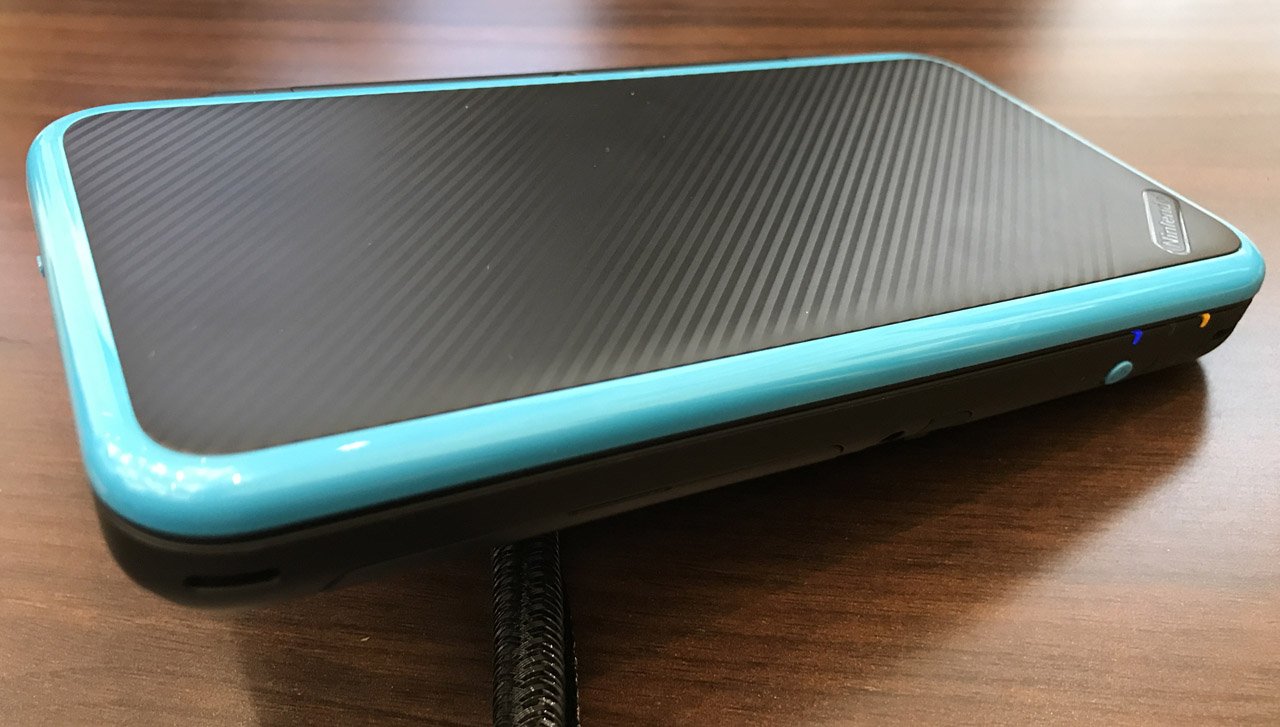
But even more than that, it feels like a system for younger players. After spending a couple of hours with a pre-release model at a Nintendo demo event (disclosure: My travel and overnight accommodations were covered by the company), I can't deny this is a device designed for younger hands, despite being fairly large as portables go. While the hardware is almost exactly the same size as the New 3DS XL, it's a much lighter device. It doesn't feel flimsy, per se, but compared to its 3D-capable equivalent — to say nothing of the weighty, rock-solid Switch! — the New 2DS XL has a decidedly airy, even toylike feel to it.
This is further reinforced by the materials Nintendo used for the shell. The plastic has a somewhat matte quality to it, unlike the slicker plastics used for most New 3DS XL iterations. The upper shell has been designed with a subtle satin-finish pinstripe effect, but the base of the console — which is to say, the part that players hold — has a grippier friction about it... perfect for preventing it from sliding from clumsy young hands. And in the event it does slip, the upper screen now has a durable bumper around its edges. That turquoise plastic rim isn't simply visual trim; it's made of a different (and seemingly more shock-absorbent) plastic.
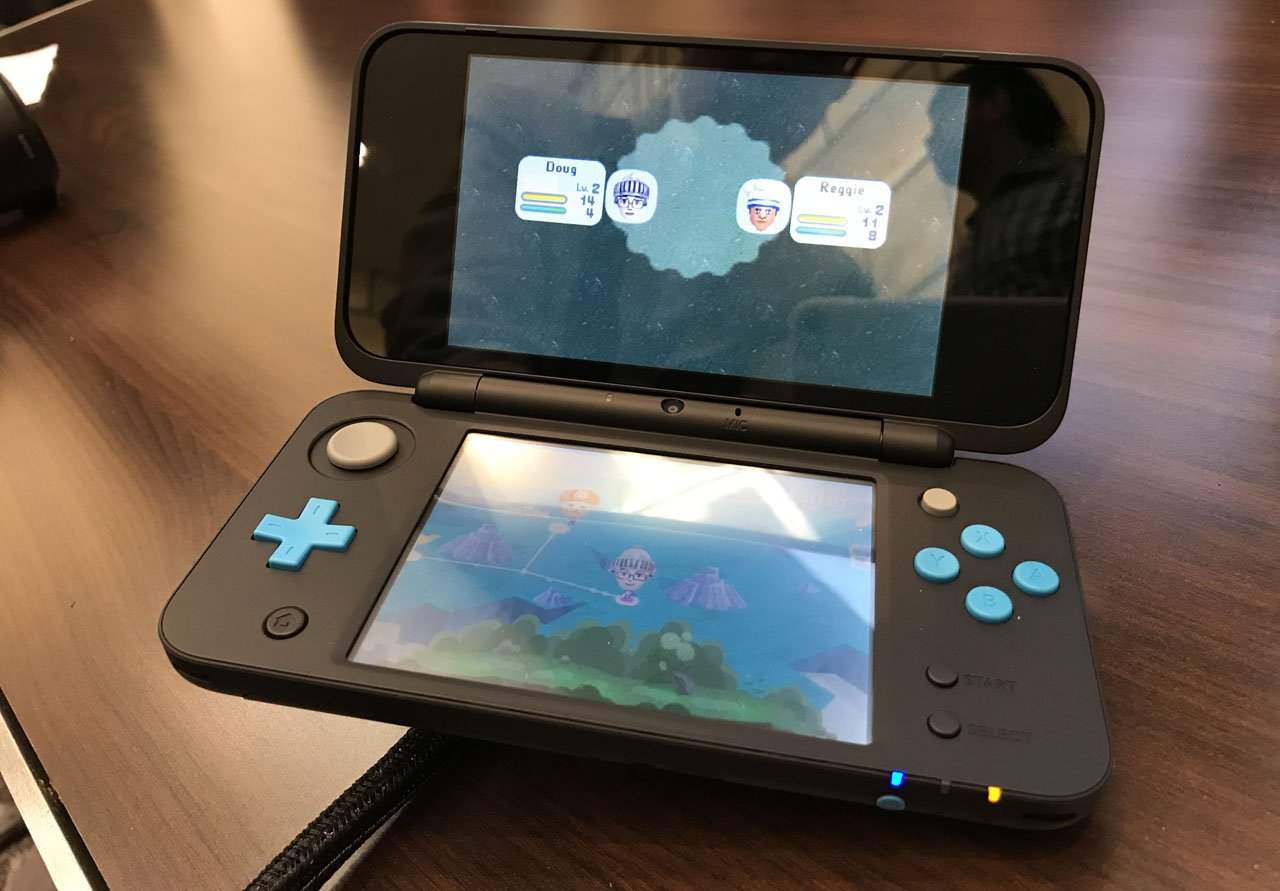
The system's interior has been subtly changed as well. The screens appear to be unchanged in size from the New 3DS XL, but the whole thing is now slightly streamlined and flattened. The lower screen is no longer housed in a slightly raised bezel but instead recessed into the body of the system, with the Home button moved from directly below the screen to its lower left side.
And then there's the upper screen, which has a completely different appearance from the older model. The entire upper panel interior now looks like nothing so much as a smartphone, with the protective glossy plastic expanded beyond the bounds of the screen to encompass the entire upper half of the device. The speakers, which formerly sat on either side of the upper screen, are now discreetly tucked out of sight. I doubt the smartphone resemblance came about by accident; mobile gaming has been the 3DS family's biggest existential threat from the start, and kids know iPhones. Of course, this system doesn't offer a touch interface on its upper screen (something I've watched younger players struggle to come to terms with with other 3DS models), but the visual similarity to the format that has become most kids' default gaming device can't hurt.

A number of external elements of the New 2DS XL body have been streamlined from its 3D counterpart as well. Many of the small protrusions and other low-relief details have been flattened out to create the lowest profile possible. This is especially noticeable in the stylus: It sits flush in a small inset detail next to the headphone jack, so unobtrusive I had to turn the system over several times in order to find it. Likewise, the cartridge slot is now covered by a small flap, right next to the Micro SD card slot. In other words, no more unscrewing and disassembling the system in order to add internal memory.
Overall, the effect is kid-friendly without quite leaping full-body into "cheap toy" status.
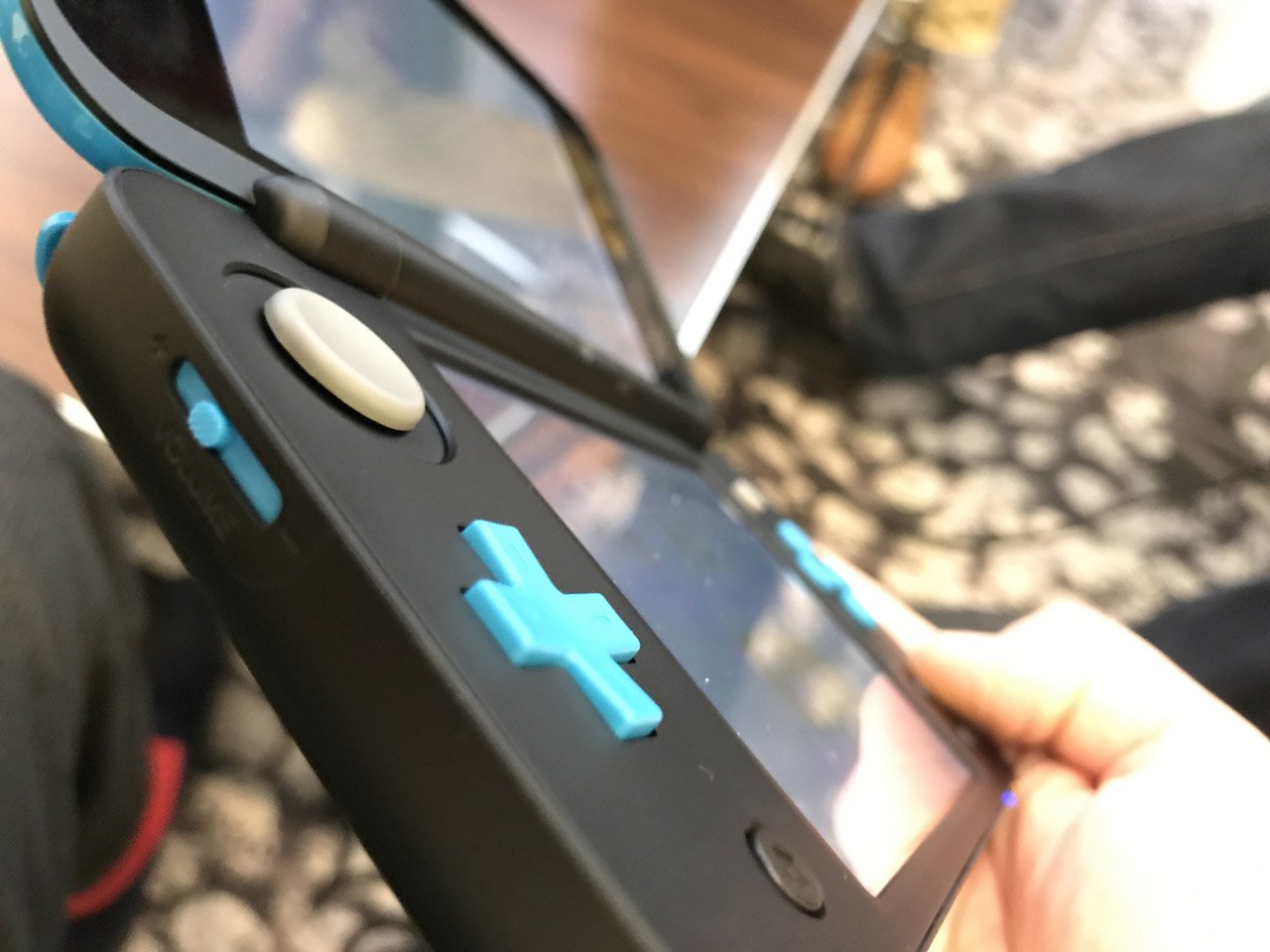
All in all, this adds up to make the New 2DS XL a completely baffling announcement that makes perfect sense. Well, not perfect, exactly. There's still the risk of Nintendo's two handhelds — by which I mean 2DS/3DS and Switch — cannibalizing one another in the long run. And while the 2DS/3DS family have a remarkable number of interesting games on the way for a system that probably should be dead by now (especially if Atlus ever gets around to announcing localizations for some of its RPGs), I'm not sure that the youth market is necessarily clamoring for a Pikmin spinoff. On the other hand, I think it's pretty safe at this point to assume a new Pokémon game will hit 3DS this fall, rather than the franchise leaping immediately to Switch as fans have been wishfully predicting. On the contrary, given the staggering success of Pokémon Sun & Moon Versions last fall, I wouldn't be surprised to learn that the New 2DS XL is ultimately a way to refresh the platform and keep interest up long enough for Game Freak to put together one final 3DS Pokémon entry to carry Nintendo to a green (not red) 2017 holiday quarter.
Unless the New 2DS XL sparks a massive surge in sales for the platform — a Game Boy-like second wind, which seems unlikely — this does strike me as the last hoorah for the 3DS family. Nintendo clearly has its future pegged on Switch, for which it has Wii-scale aspirations; the 3DS now is simply easy money, a steady source of reliable income thanks to the 60-million-plus systems out in the wild. Its role now is to do as the Game Boy family did while Nintendo was kicking off the DS: Keep the numbers up until the new console can stand on its own.
Of course, you'd think the ultra-hot Classic NES Edition would have been a big help in that regard, too. But it just wouldn't be Nintendo if you could make sense of it all.

